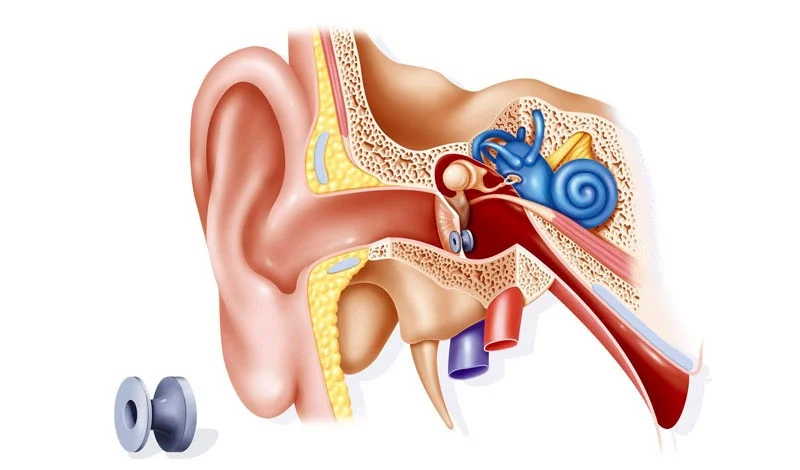
how it is performed
During the procedure, the patient is under general anesthesia, and the surgeon will make a small incision in the eardrum to allow fluid to drain from the middle ear. The grommet is then inserted into the hole in the eardrum to keep it open and allow for continued drainage. The grommet is typically made of plastic or metal and is designed to stay in place for several months to a few years before naturally falling out.
Why is the surgery done
Myringotomy with grommet insertiossn is often done to treat conditions such as:
- Recurrent ear infections
- Chronic fluid buildup in the middle ear
- Hearing loss caused by fluid buildup
- Barotrauma (pressure-related ear pain), such as from frequent air travel or scuba diving
What to expect post surgery
After the procedure, the patient may experience some mild discomfort, drainage, or hearing loss. Pain medication and antibiotics may be prescribed to manage these symptoms. The patient will need to avoid getting water in the ear for a period of time after the surgery to prevent infection.
Most patients experience improved hearing and a reduced frequency of ear infections after the procedure. The grommet typically falls out on its own after a few months to a few years, and the eardrum usually heals on its own. In some cases, a second procedure may be necessary if fluid buildup or ear infections return after the grommet falls out.
Risks associated with the surgery
Myringotomy with grommet insertion is a relatively safe procedure, but as with any surgery, there are potential risks and complications. Some of the risks associated with this procedure include:
- Infection
- Bleeding
- Tinnitus
- Perforation
- Temporary Hearing loss
- Scarring in middle ear or eardrum
Frequently Asked Questions
-
Is there any PAIN AFTER GROMMET INSERTION
IT IS ASSOCIATED WITH VERY MINIMAL PAIN
-
WHAT AGE CAN YOU GET GROMMETS
PROCEDURES CAN BE DONE AT ANY AGE IF THEY HAVE EUSTACHIAN TUBE DYSFUNCTION, SOM ( RECURRENT SEROUS OTITIS MEDIA), BULGING EARDRUM, FACIAL PARALYSIS
-
WHEN ARE GROMMETS RECOMMENDED
AOM ( RECURENT)
EUSTACHIAN TUBE DYSFUNCTION, BULGING EAR DRUM, ACUTE PAIN, OTITIS MEDIA WITH EFFUSION
- WHAT TYPE OF ANESTHESIA IS USED FOR MYRINGOTOMY
GENERAL ANESTHESIA
- CAN MYRINGOTOMY CAUSE HEARING LOSS
NO
- WHAT IS SUCCESS RATE OF MYRINGOTOMY
USUALLY 100%
- IS MYRINGOTOMY PERMANENT
YES,BUT GROMMETS WILL BE REMOVED AFTER 2 MONTHS
- Why choose Amrita ENT for Myringotomy surgery?
Our expert ENT surgeons ensure safe, precise, and effective treatment with advanced technology.
- Is Myringotomy at Amrita ENT a quick procedure?
Yes! It’s a safe, outpatient procedure with minimal discomfort and quick recovery.
- WHAT TYPE OF ANESTHESIA IS USED FOR MYRINGOTOMY
-
CAN EAR TUBES CAUSE PERMANENT DAMAGE
NO,THEY ARE USUALLY REMOVED AFTER 2 MONTHS
-
WHAT ARE RISKS OF TUBE IN EAR
Infection may occur due to water entering into the ear.scarring of the eardrum may be seen occasionally.
-
IS THERE AN AGE LIMIT FOR EAR TUBES
NO
-
WHAT CAN YOU NOT DO AFTER MYRINGOTOMY
HEAVY NOSE BLOWING, AVOID WATER FROM ENTERING INTO EAR
-
IS BLEEDING NORMAL AFTER MYRINGOTOMY
NO ,MILD BLEEDING IS ACCEPTABLE
-
CAN MYRINGOTOMY CAUSE NERVE DAMAGE
NO
-
HOW LONG DOES MYRINGOTOMY TAKE
15 MINUTES - 20 MINUTES
-
What are the benefits of Myringotomy at Amrita ENT?
Improved hearing, reduced infections, and expert post-surgical care for a smooth recovery.
-
How experienced are Amrita ENT’s surgeons?
Our specialists have years of experience in performing successful Myringotomy procedures.
